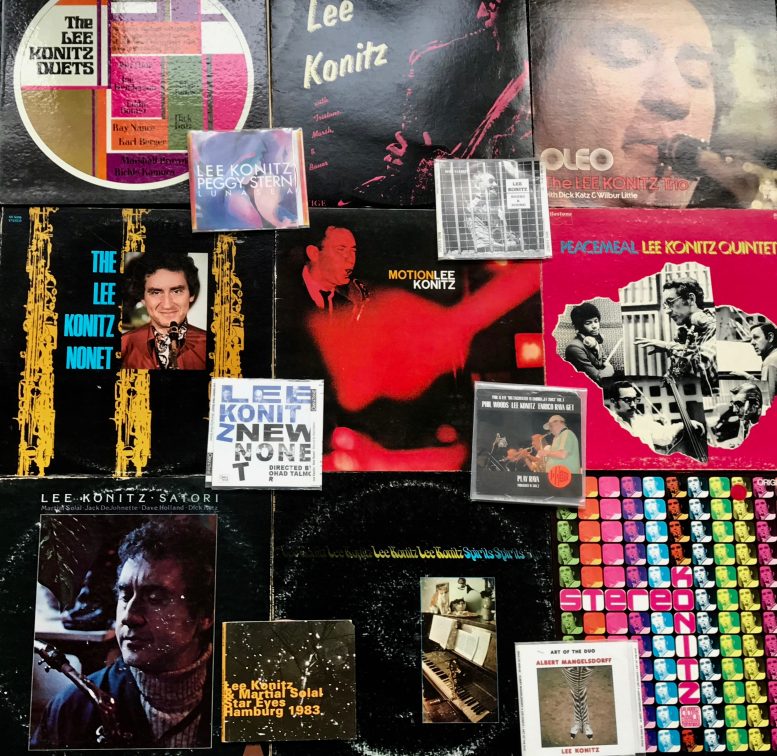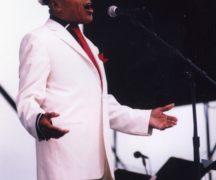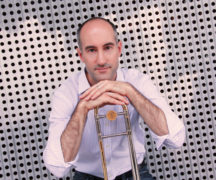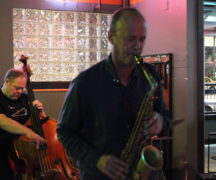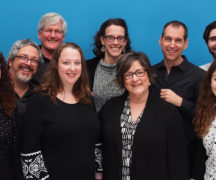By DAVID DUPONT
BG Independent News
As it has on so much of society, COVID-19 has taken its toll on the jazz world.
- Ellis Marsalis, 85, patriarch of the renowned jazz family and the leader of the modern jazz renaissance in New Orleans.
- Guitarist Bucky Pizzarelli, 94, who played with everyone in storied studio and performance career as well as being the father of guitarist and vocalist John Pizzarelli.
- Trumpeter Wallace Roney, 59, who was not so long ago, or at least it seems to me, one of the music’s Young Lions.
- And there’s pianist McCoy Tyner, 81, who died in early March from undisclosed causes.
Then this morning (April 16) came word of the loss of jazz master Lee Konitz on April 15. Though little known outside of jazz circles, he stood as one of the last standing modern jazz pioneers.
As such his career was easily encapsulated into certain touchstones – participant on the first free jazz recordings led by pianist and teacher Lennie Tristano; member of Miles Davis’ Birth of the Cool band; soloist with arguably Stan Kenton’s greatest band. Those cover a lot of the jazz spectrum, and yet doesn’t at all explain the space Konitz occupied in that landscape.
As he told NPR a decade or so ago, he never really hit the big time. For most of his career, he worked as a single, bouncing from gig to gig with pick up bands, lending his elastic vocal sound, to whatever the situation was.
Pianist Frank Kimbrough, during his recent visit to Bowling Green State University, recalled a recent performance with the saxophonist where he had to set his horn aside during a solo and sing what was on his mind, because his fingers were failing him. His imagination never did, not that it mattered, he wasn’t a perfectionist, he was an improvisor. The music created in the moment was all that mattered.
That was evident when he arrived in Ann Arbor in May 1999, to play a show at the Kerrytown Concert House.
Transportation issues delayed his arrival. Just minutes before showtime, he met with his bandmates for the night – local ace drummer Pete Siers and first-call bassist Jeff Halsey, from Bowling Green. I was hanging just outside the room, and the preparations for the set went down like this. Konitz looked at Siers and said, I’ll start playing, and then you’ll come out and join me, and then turning to Halsey, then you’ll join me. No talk of tunes, or chord progressions or tempo. Just let it fly. Shortly after, the show began with Konitz’s querulous musical equations swirling about the room. Konitz always seemed to be having a conversation, a debate it seemed between the music’s tradition and its future that he was shaping phrase by phrase.
Now I had been a fan, since I was in high school, yet this was the first, and only, time I heard him perform.
My first recording was “Peacemeal,” his follow up to his most recognized album, “The Lee Konitz Duets.” On that album, he played duets with a range of musicians coming from all corners of the jazz scene, including Ray Nance from Ellington’s band, Elvin Jones from Coltrane’s band, and Lima-bred saxophonist Joe Henderson, one the 1960s young lions. The ranged from free-form, including with Nance, no less, to tributes to Konitz’s idols, Louis Armstrong and Lester Young, in which he played their improvisations note-by-note.
Several years later when I was a young jazz musician in search of a voice, or at least some competence as a soloist, I ventured to Konitz’s Manhattan apartment on (if I have my geography correct) Central Park West for a lesson.
This was 1973, and the bebop business had been in the doldrums for a number of years. Faced with jazz fusion and free jazz, not to mention rock, purveyors of more mainstream jazz, even an iconoclast like Konitz, were having hard times finding work. The gigs and recording contracts had dried up.
Many had moved into academia, including his contemporary Max Roach and saxophonist and provocateur Archie Shepp, both of whom taught me at the University of Massachusetts in Amherst. So, we chatted some about them. Konitz had just returned from a package tour of Japan, which included Shepp. He was bemused when I related that Shepp had told a student he should play Duke Ellington’s “In a Sentimental Mood” like Konitz. Konitz was not known for playing Ellington, but the avant-gardist turned traditionalist Shepp was.
Konitz also seemed wistful in recalling the trip. It was nice he said just to be a musician. But he’d made something of a reputation as a teacher whether face-to-face or by mail – what we did before online learning. He’d exchange tapes with students. He even recorded some Music-Minus-One sessions.
Little did we know that we were on the cusp of a renaissance of traditional jazz. Some of my peers at UMass were in the band Widespread Depression, which took its cues from the swing era.
Within a few years, the record stores were suddenly filled with jazz reissues as well as new versions of the music on those reissues. We had the emergence of neo-swing, and the Young Lions, and new appreciation for the music’s masters.
Musicians started playing standards again. Konitz stopped teaching, and by the CD era was filling the bins with new work. He became a peripatetic soloist appearing around the globe.
I must say I miss when every Konitz record was an event, and treasured the four albums he cut on Milestone from 1968 to 1975 starting with “The Lee Konitz Duets,” they summarized his career to date, and served as a launching pad for the music that would flow for the next four decades, ending only today.
And how was the lesson? Well, I wasn’t at a level to be able to take advantage of what he had to offer. But Konitz, who had a reputation from being something of a curmudgeon, tolerated me well enough. I left with assignments and never returned. The logistics and cost of a four-hour bus ride to the city proved prohibitive.
But I continued to work on what he told me – transcribing Louis Armstrong and Lester Young solos and methodically dissecting the harmonic changes of songs. It didn’t take me where I wanted to go as a musician, but gave me great insights into the music, and left an indelible imprint on me. It’s evident during those odd moments when I have a chance to play, and whenever I listen to music.
Konitz left a rich legacy in the years he was with us, and a hole that can’t be filled now that he’s gone.

